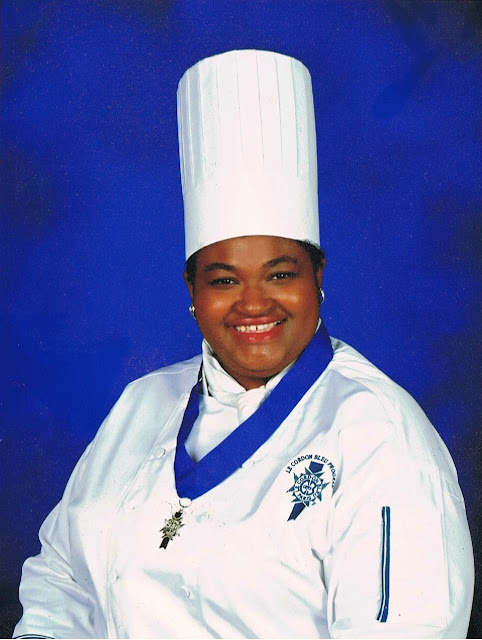Easy Shrimp Creole
Shrimp Creole is a classic Louisiana Gulf dish made with a tomato-based Creole sauce accented and flavored with the "Holy Trinity": onions, bell peppers and celery. This is the ultimate one-pot meal. Served over rice, add extra hot pepper sauce or cayenne to your shrimp if you like a little extra spicy kick in your food.
Some don't like to start with a roux, but I do. I like the depth of flavor and the complex flavors developed from a dark roux. I use chili sauce on place of tomato paste (which has 10 times the flavor and I never seem to have paste on hand when I need it).
 |
My grandfather on my mother's side of the family, was from New Orleans. Through him by way of my mother and grandmother (his wife) I learned recipes for red beans and rice, jambalaya, shrimp and crawfish etoufee, gumbo, king cake, beignets all using the highly lauded cast iron skillet. These recipes are pulled from the depths of my highly flavored soul. I'm proud to share this recipe so that the spirit and joy that is New Orleans lives on in all of us through our tastebuds.
WHAT IS CREOLE SAUCE?
Creole sauce is a thickened mixture of tomato sauce, chopped vegetables (onions, bell pepper and celery), garlic, and spices.
WHAT IS THE DIFFERENCE BETWEEN CAJUN AND CREOLE CUISINE?
Both cusines are inextricably linked. Cajun cuisine is seen as country food or from the swamps and bayou of Louisiana. Cajuns are descendents of Acadians who settled in the area from Canada. They were the trappers, farmers and more agrarian people of the area. Creole cusine is seen as more refined, provencial food with foundations in French cooking and the classical hierarchy of the kitchen brigade.
While spicy dishes are found in both cuisines, it depends on how much cayenne pepper or hot pepper sauce is used in the recipe.
WHAT'S THE DIFFERENCE BETWEEN SHRIMP CREOLE AND JAMBALAYA?
Shrimp Creole is a shrimp dish that rests on a bed of rice. Jambalaya is a rice dish. Spanish colonists to the Louisiana area were unable to make paella and jambalaya was the result of attempts to make a variation of paella using ingredients available locally.
CAN I USE OLD BAY SEASONING INSTEAD OF CREOLE/CAJUN SEASONING?
Cajun seasoning relies on the use of many peppers, such as white and black pepper, bell peppers and cayenne peppers, paprika and garlic. Creole seasoning primarily relies on herbs like oregano, bay leaf, basil, thyme, rosemary, parsley and paprika. Old Bay Seasoning has many of the same herbs and spices as Creole and Cajun seasoning, so substituting it and adding oregano and cayenne pepper means, YES YOU CAN.

Easy Shrimp Creole
Ingredients
- 2 lbs shrimp, peeled and deveined (tail-on, optional)
- 2 Tablespoons Old Bay seasoning
- 1 tsp cayenne
- 2 tsp oregano
- ¼ cup oil
- ⅓ cup all-purpose flour
- 1 medium yellow onion, finely chopped
- 2 celery ribs, finely chopped
- 1 green bell pepper, seeded and finely chopped
- 2 dried bay leaves
- 1 Tablespoon garlic, chopped
- 6 oz chili sauce
- 1 cup canned tomato sauce
- 1 to 2 Tablespoons hot sauce, to taste (optional)
- 1 14.5-oz can diced tomatoes
- Fine sea salt and black pepper
- 1 cup chopped scallions, for garnish
- Steamed rice, for serving
Instructions
- Season shrimp with Old Bay seasoning, cayenne and oregano. Set aside.
- Heat 12-inch cast-iron skillet to medium heat. Heat oil until it is shimmering. Sprinkle the flour on top of the oil and stir constantly to combine into a smooth paste. Stir until a roux the color of peanut butter forms, about 10 minutes. If desired, continue to stir the roux until it changes to a deep brown color and furthermore to a deep, brick red color. Be careful not to leave the roux unattended or it will burn and you will have to start over.
- Add the onion, celery and bell pepper, increase the heat to medium-high and stir to coat the vegetables with the roux. Add in the garlic and bay leaves. Cook until softened, stirring occasionally, about 5 minutes.
- Pour in the chili sauce, tomato sauce, hot sauce (if using), and diced tomatoes. Bring to a simmer, then reduce the heat to medium-low. Simmer for 10 minutes until thickened, stirring occasionally to make sure that the bottom doesn’t burn. If needed, add water.
- Once the sauce has thickened, add the seasoned shrimp, nestling them into the sauce. Simmer until opaque and cooked through, about 10 minutes, turning each piece halfway through the cooking time. Taste and adjust seasoning with the fine sea salt and black pepper.
- Remove from the heat and let stand for a few minutes, uncovered. Sprinkle with scallions and serve over steamed rice.
Please consult a healthcare professional or dietician about nutritional needs for your diet. I am a communications professional, not a physician.
Like this post?
About the author

Nikki Miller-Ka
Ms. Miller-Ka is a classically trained chef with a BA in English from East Carolina University and a Culinary Arts Associate Degree from Le Cordon Bleu-Miami.
Formerly, she’s worked as a researcher, an editorial assistant, reporter and guest blogger for various publications and outlets in the Southeast. She has also worked as a catering chef, a pastry chef, a butcher, a baker, and a biscuit-maker. Presently, she is a food editor, freelance food writer, and a tour guide for Taste Carolina Gourmet Food Tours.










Leave a reply
Leave a reply
Thank you for coming by! Don't make this visit your last!